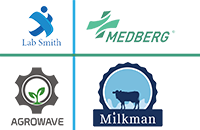Details
Stepper motor
-
Stepper motor operation through pulse circuit
-
Stepper motor operation through 8085 kit
-
Built-in programs in EPROM
-
Dynamic response study
Introduction
With the rapid advancement in digital electronics, the stepper motor by virtue of its being a direct digital actuator, has become an important element of a control system. Well known applications include watches, floppy and hard disk drives, printers etc. This experimental set-up aims at providing an exposure to the basic operation of a stepper motor, its drive and logic, and limitations as far as the internal dynamics is concerned. Experiments have been designed to demonstrate the effect of external load – inertial and frictional, on the motor performance. Provisions are available for free running operation as well as single stepping mode with LED indication for the active phase. The unit may also be operated by a microprocessor kit for which a built-in interfacing and automatic changeover has been provided.
It may be seen that this is a complete experiment set and not a microprocessor kit with an ADD-ON card and a motor.
An exhaustive literature is supplied with the unit explaining in details the theory of stepper motors, procedure for conducting the experiments and interpretation of the results. The details of application software are also included.
Experiments
-
Study of manual stepping through push button switch - it would enable the student to appreciate one to one correspondence between the number of steps and shaft movement. A 360° calibrated dial is used for the measurement of step angle
-
Study of speed and direction control logic by recording the pulse sequence for both clockwise and counter clockwise motions
-
Study of resonance effect at various speeds - it provides an idea of the dynamic behaviour of the motors
-
Display and measurement of the dynamic characteristics of the motor on the CRO while the motor is given a to-and-fro motion in the wobble mode. This enables one to calculate ‘single stepping’ and ‘slew’ regions
-
Programming the microprocessor kit to implement various features like direction, speed, prescribed angle of rotation, prescribed number of steps or an arbitrary motion
-
Application software is included for demonstration and also for use as a set of subroutines
-
Study of the effect of inertial and frictional loading on the dynamic performance
Features & Specifications
-
Single stepping and free running modes of operation with speed variation and direction reversal - internal TTL circuit.
-
Servo Potentio-meter
-
Operation through micro-processor kit – sample control programs provided
-
Stepper motor specification
-
Torque: 2.8 Kg-cm
-
Step angle: 1.8°
-
Power: 12V, 1A/phase
-
220V±10%, 50Hz mains operation
-
Complete in all respects, except a measuring CRO
Technical Specification of the uP kit supplied
-
High performance 8085A CPU operating at 3MHz
-
4K powerful monitor FIRMWARE in 2732. Includes all standard commands, codes, functions and utility sub-routines
-
4K user RAM 6116
-
Versatile Keyboard/Display controller using 8279
-
Serial I/O lines, 22 parallel lines from 8155 and 24 from 8255
-
Built-in audio cassette interface
-
6 digit seven segment LED display
-
Power Supply: Built-in in the Stepper Motor Unit
Ordering Details:

